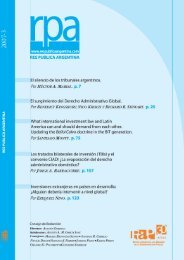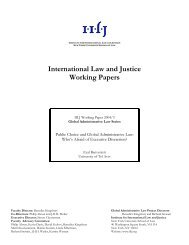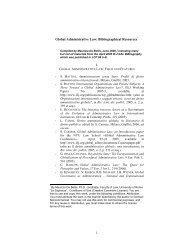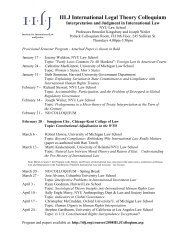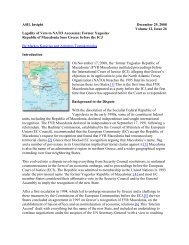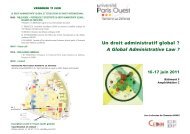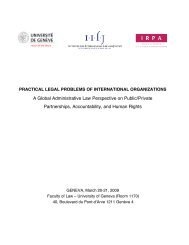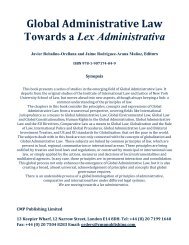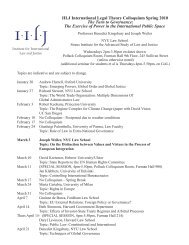brought under the dominican republic - central america - ita
brought under the dominican republic - central america - ita
brought under the dominican republic - central america - ita
You also want an ePaper? Increase the reach of your titles
YUMPU automatically turns print PDFs into web optimized ePapers that Google loves.
ability and not merely as a possible controversy. In <strong>the</strong> Tribunal‟s view, before that<br />
dividing-line is reached, <strong>the</strong>re will be ordinarily no abuse of process; but after that<br />
dividing-line is passed, <strong>the</strong>re ordinarily will be. The answer in each case will, however,<br />
depend upon its particular facts and circumstances, as in this case. As already<br />
indicated above, <strong>the</strong> Tribunal is here more concerned with substance than semantics;<br />
and it recognises that, as a matter of practical reality, this dividing-line will rarely be<br />
a thin red line, but will include a significant grey area.<br />
2.100. To this extent, <strong>the</strong> Tribunal accepts <strong>the</strong> Respondent‟s general submission that: “... it<br />
is clearly an abuse for an investor to manipulate <strong>the</strong> nationality of a shell company<br />
subsidiary to gain jurisdiction <strong>under</strong> an international treaty at a time when <strong>the</strong> investor<br />
is aware that events have occurred that negatively affect its investment and may<br />
lead to arbitration.” 78 In particular, abuse of process must preclude unacceptable<br />
manipulations by a claimant acting in bad faith and fully aware of an existing or future<br />
dispute, as also submitted by <strong>the</strong> Respondent:<br />
―... In addition, <strong>the</strong> investor has substantial control over <strong>the</strong> stages of <strong>the</strong><br />
development of <strong>the</strong> dispute [as described in Maffezini]. Because it is <strong>the</strong> investor<br />
who must express disagreement with a government action or omission and <strong>the</strong><br />
investor who must formulate legal claims, <strong>the</strong> investor may delay <strong>the</strong> development of<br />
<strong>the</strong> dispute into <strong>the</strong>se later stages until it has completed <strong>the</strong> manipulative change of<br />
nationality. Relying on this test would permit an investor that is fully aware of a<br />
dispute to create access to jurisdiction <strong>under</strong> a treaty to which it was not entitled at<br />
<strong>the</strong> time of <strong>the</strong> actions affecting <strong>the</strong> investment, and at <strong>the</strong> same time provide no<br />
protection to <strong>the</strong> State from this abusive behaviour.‖ 79<br />
2.101. Ratione Temporis: The Tribunal considers that this approach as regards <strong>the</strong> Abuse<br />
of Process issue is materially different from <strong>the</strong> approach applicable to <strong>the</strong> Ratione<br />
Temporis issue, where both Parties relied on <strong>the</strong> general principle of nonretroactivity<br />
for <strong>the</strong> interpretation and application of international treaties.<br />
2.102. The Claimant submitted as follows in its Post-Hearing Submissions: “Whe<strong>the</strong>r <strong>the</strong><br />
Tribunal has jurisdiction ratione temporis depends on whe<strong>the</strong>r <strong>the</strong> measure at issue is<br />
an act or fact that took place or a situation that continued to exist after CAFTA be-<br />
78<br />
79<br />
The Respondent‟s Post-Hearing Submissions, § 49. Emphasis by <strong>the</strong> Respondent.<br />
The Respondent‟s Post-Hearing Submissions, § 50.<br />
Part 2 – Page 32



